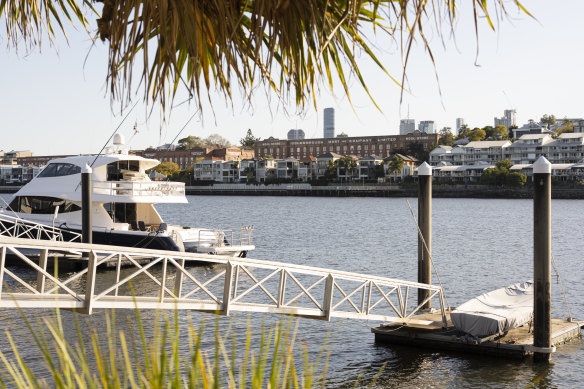- Exclusive
- Business
- The economy
- Census
Brisbane’s suburban rich list: Tracking the city’s changing fortunes
By Matt Wade and Craig Butt
The riverside neighbourhoods of Brisbane’s inner east have long had the city’s biggest pay packets.
But during the past decade, suburbs to the north and north-west of the CBD have broken into the city’s top 10 localities for median personal income.

The riverside suburbs of Brisbane’s inner east have long had the city’s biggest pay packets, but now there are some new contenders. Credit: Jamila Toderas
The neighbourhood of Bardon jumped from a ranking of 17th in 2011 to fourth in 2021 after its median personal income rose 52 per cent in that period to $1334 per week, analysis of census data by the Brisbane Times shows.
In nearby Grange, the median personal income reached $1322 in 2021, lifting it from 15th to fifth in the suburban rankings.
Neighbouring Wilston climbed from 16th to 10th place after its median personal income grew by 48 per cent over the decade to $1252.
Riverside neighbourhoods east of the CBD still occupied the top three places for personal weekly income in 2021: Newstead-Bowen Hills ($1405), Bulimba ($1402) and Hawthorne ($1352). Those three also had Brisbane’s highest median weekly personal incomes in 2011.
But the income gap between Brisbane’s inner east and inner north is narrowing.
In 2011 the personal weekly income in Newstead-Bowen Hills was 29 per cent higher than in Bardon but by 2021 that had shrunk to 5 per cent.
This map shows the median weekly personal income for those aged 15 years an over in 2021 for Brisbane suburbs:
There have been some unexpected changes to Brisbane’s suburban income rankings during the past decade.
The median weekly personal income in the statistical area named Eagle Farm-Pinkenba rose by 86 per cent over the decade to $1269 a week, lifting that area from a ranking of 98th in 2011 to ninth by 2021.
A key reason for this jump is that the Bureau of Statistics includes a section of the suburb of Hamilton, near Portside Wharf, in the Eagle Farm-Pinkenba statistical area.
High-density residential development in that area during the past decade has boosted both the local population and the typical pay packet.
Other suburbs to make significant gains on the city’s earnings rankings over the decade to 2021 were Salisbury-Nathan (median personal income up by 66 per cent), St Lucia (up 65 per cent) Robertson (up 62 per cent) and Cannon Hill (up 61 per cent).
KPMG urban economist Terry Rawnsley said Brisbane’s high-income earners were more dispersed than in some other capital cities, especially Sydney, because of geography.
“In Sydney the highest income people tend to be clustered in a relatively small arc around the CBD which is in the east of the metro area, but in Brisbane the CBD is more central, so those high-income people can stretch out over a bigger surface area, and you don’t get the same concentrations of very high incomes,” he said.
Rawnsley said the lower number of big global companies located in Brisbane also contributes to a more even distribution of incomes.
“Brisbane’s CBD doesn’t have quite as many very high paying corporate jobs as you get in the CBDs of Melbourne and Sydney,” he said.
The income distribution analysis drew attention to stark disparities across Brisbane with median individual incomes in the best-paid neighbourhoods of Newstead-Bowen Hills, Bulimba and Hawthorne about three times higher than in some outer-southern suburbs.
The lowest median personal weekly incomes in greater Brisbane were in Southern Moreton Bay Island ($455), Logan Central ($476) and Wacol ($485). All three had lower income growth between 2011 and 2021 than the citywide average.
The Gold Coast region had a median individual income of $785 a week in 2021 which was $57 lower than in Greater Brisbane.
The Gold Coast’s highest median weekly personal income was in Mermaid Beach-Broadbeach ($950) followed by Miami ($919).
Greater Brisbane’s median personal weekly income grew by a third between 2011 and 2021 – from $633 to $842. That was $37 a week more than the nationwide median in 2021 of $805.
Brisbane’s median personal weekly income was higher than in Adelaide and Hobart on par with Melbourne but lower than in Perth, Sydney, Darwin and Canberra.